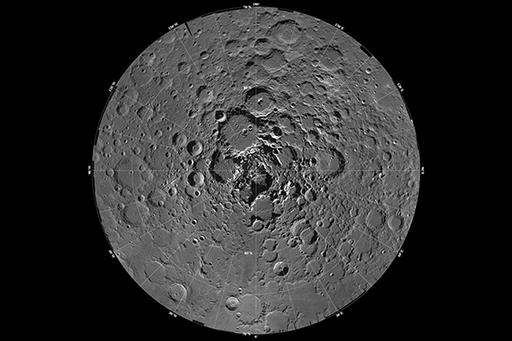2.2 Ice in polar craters on the Moon
This image of craters at the lunar south pole contains some deep craters that are completely black – they were always in shadow. In the case of holes on Earth close to the poles the atmosphere scatters light, so some light (and heat) always penetrates, but this can’t happen on the airless Moon. These craters are places on the Moon where water-ice could remain for immense spans of time.
Although the news of the radar reflections was considered very important at the time, being the first observation of anything resembling water on the Moon, there was controversy surrounding the findings. Using the Arecibo telescope in Puerto Rico, other teams of scientists were able to demonstrate that similar reflected radio signals were possible from non-shadowed regions of the Moon, where water-ice would certainly not survive during the lunar day. This suggested that the ‘water-ice’ seen by Clementine was just a feature of the surface roughness of the crater floors investigated.
Two steps forward, one step back. The scientific method consists of establishing a hypothesis and testing it repeatedly so scepticism is ‘normal’ and healthy for any new discovery. Clementine had re-awakened interest in finding water on the Moon, and had possibly found the first traces of evidence to support the idea. But it couldn’t provide conclusive proof for the presence of water on the Moon, and so the uncertainty and searching continued.

